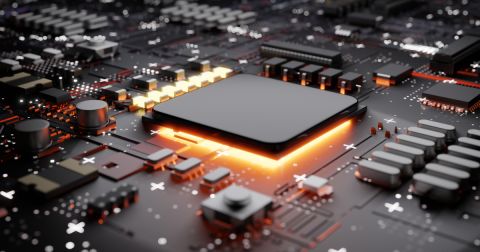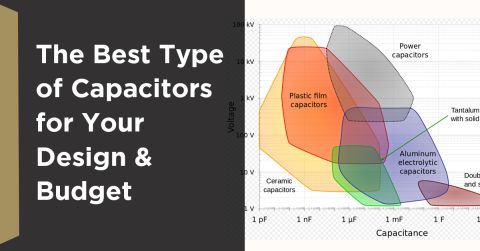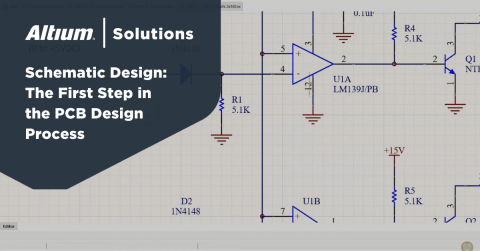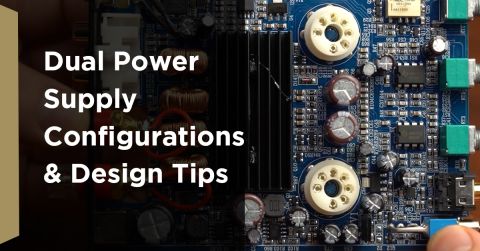Pipelining Your Design File Process: Component Selection
Effective PCB design begins with having a good process flow mapped out. Also known as pipelining, this process will help to define each segment of the data management as the design moves through its different steps. Starting with component selection, the PCB design will progress systematically through schematic development, PCB layout, and finally manufacturing output data.
Component selection is where PCB pipelining starts, however, and without a good system in place to create or acquire component information, the pipelining can get fouled right off the bat. Historically the selection and creation of PCB CAD required a lot of effort on the part of CAD librarians and other design personnel. Mounds of component data would have to be gathered and processed in order to create PCB components and footprints. Today there are many different design tools that will help speed you through this part of the PCB design process. Altium is an excellent example of a premier design tool that process component information at the design level making the job of design departments a lot easier.
A Manual Part Selection Process Can Clog the Pipeline
Traditionally the process of selecting and preparing a component for use in a PCB design was very complex. Research would have to be done to find the part needed, and then data sheets would have to be acquired for the CAD librarians to build the. To have a working CAD part would require the creation of the following:
- Schematic Symbol
- PCB Footprint
It was essential to have the most up-to-date data possible to create these accurately. Many times the CAD librarians would find that their were out-of-date because changes had been made by the part vendor that they weren’t aware of. If those were already in use, then the designs that they were used in would have to be reworked. To guard against this, PCB designers often found themselves working with prototype from the CAD because the librarians didn’t have the complete or latest data to work with. These proto would then have to be updated before the design could be completed.
As PCB design progressed, more data and information began to be added to the PCB in order to satisfy the needs of the latest design software packages. These would include the following:
- Component Simulations
- 3D Models
- Parameter Information
- Sourcing Information
- Supporting Documentation (data sheets and technical notes)
As more and more data processing requirements were added to the PCB, the more this impacted the workload of the PCB librarians. Fortunately, part vendors started supplying a lot of this information which helped, but the job of collecting, verifying, and compiling all of the data to create a single component was still a lot of work.
To ease this clog in the PCB data management pipeline, Altium Designer® came out with tools to help with this process a few years back. Utilizing the manufacturer and supplier data resources of the Altium Provider service, Altium can provide the user with up-to-date part data and information to search through. To further ease the distributor part search and selection of components, Altium Designer now offers a new “Manufacturer Part Search” utility in a single advanced panel. This will allow the user to easily search for and use a selected component along with all of its related data in a web part lookup.
The Manufacturing Part Search panel in Altium Designer
Component Selection in Your Design Process
The Manufacturer Part Search panel can be accessed through the “Panels” button on the lower right of the session window. It can be displayed in full screen as shown above, or it will dynamically adapt to a narrow view when docked. When the panel is docked, you can use the circled arrows to toggle between a displayed list of or the details of a selected part as shown below.
Two views of the Manufacturing Part Search panel when docked
Distributor part search parameters can be set up in the preferences menu. On the left side of the menu, go to Data Management > Providers. This will allow you to enable vendors from different locations and currency values as shown below.
Setting up the part providers in the Altium Designer preference settings
Searching for components is accomplished by entering part keywords into the search field. You also have the ability to browse for part types with the help of a filter as shown below. This will allow you to narrow the field of displayed to more easily find what you are looking for.
Searching for using filters to browse for specific part types
Once you are searching for components you have a lot of control over how the data is displayed. The panel allows you to set the component listing order, change the order of the columns, specify which columns are shown, and filter what is displayed in the columns. Below you can see how the columns can be moved around in order to change their order of appearance.
The display of the Manufacturing Part Search results can be configured as required
Once you have located the desired part, it can be added directly to the schematic sheet. This is done by either right clicking on the selected part and placing it, or by using the dropdown menu and selecting “Place” instead of “Download”. You also have the option to simply “drag and drop” as we did in the image below.
Placing components on the schematic sheet from the Manufacturing Part Search panel
PCB Design CAD Tools That Will Unclog Your Data Management Pipeline
The same technology that is found in the Manufacturer Part Search panel is also used in other utilities within Altium. The “Single Component Editor” uses it for part searching, and the “Explorer” and the “Component” panel use it for configuring and adding to the part choice lists. Additionally, “Active BOM” also uses it for searching for components. Below you can see an example of the components panel.
The Components panel in Altium Designer
With the Manufacturer Part Search functionality in Altium you can easily search for, report on, and download and use vendor supplied component information in a web part lookup. With this data already available, PCB librarians no longer have to take the time to do their own research and building. This can give you the advantage you need to clear out your PCB data management pipeline and improve your design speed and efficiency.
Finding design software with a user interface you enjoy as well as top-notch schematic design, model options, component placement tools with component properties, and circuit board manufacturing process priorities with Gerber file outputs can seem daunting. PCB design software, like Altium, has component data search features as well as other functionality built into it to help you streamline all of your design processes. This will help you to deliver your designs with correct data and on schedule.
Would you like to find out more about how Altium can help you streamline your PCB design data management pipeline? Talk to an expert at Altium.










